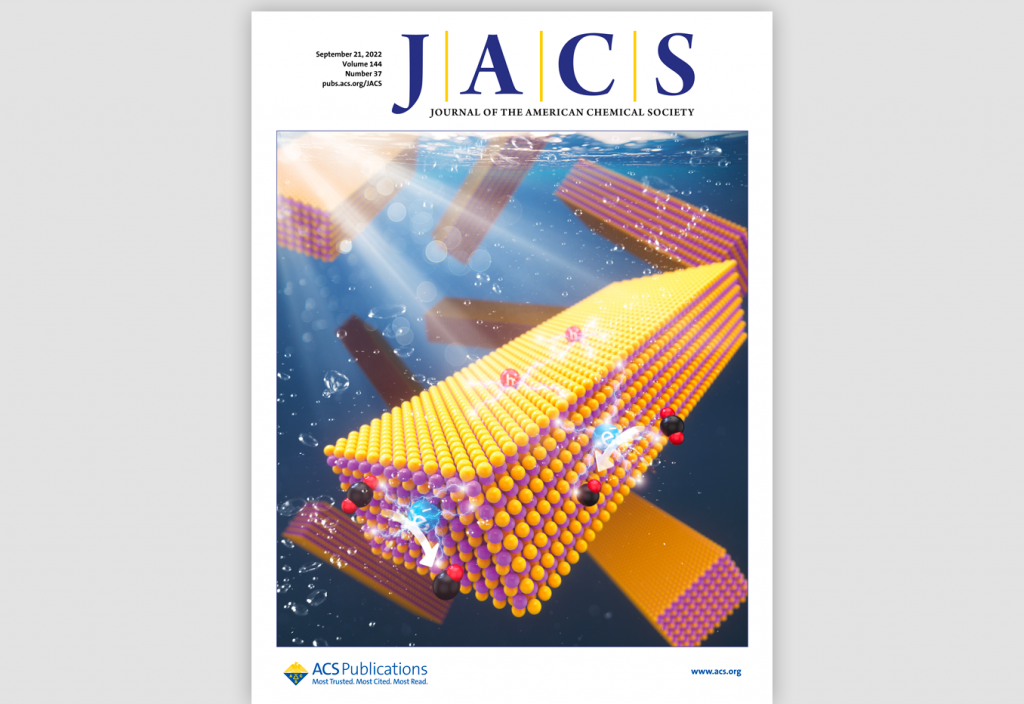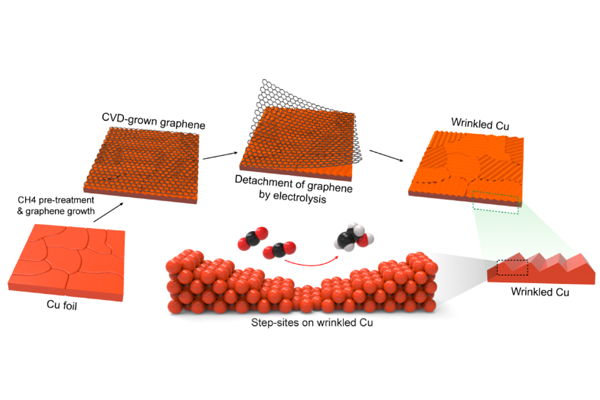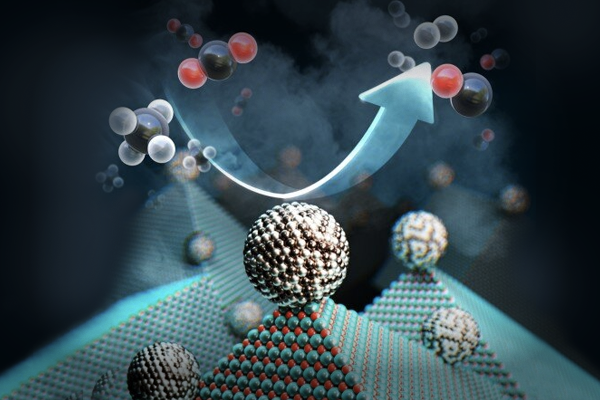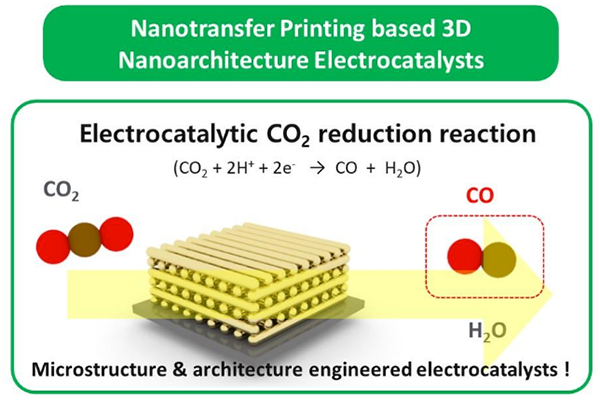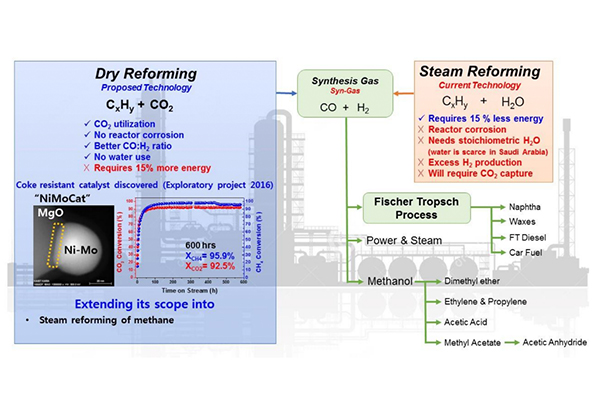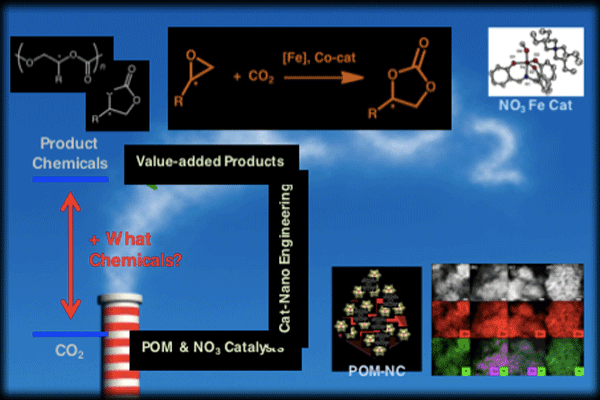-
Research Highlight Top Story
Selective and Efficient Photocatalytic Conversion of CO2 with Ultrathin Nanosheets
Prof. Doh Chang Lee’s group has developed a novel photocatalyst based on ultrathin CdS nanosheets for selective and efficient light-driven conversion of CO2 into CO. Surface engineering at atomic precision on CdS nanosheets enabled spatial separation of the reductive active sites and the oxidative active sites to designated facets. The facet-resolved redox-active sites favored efficient charge separation in the CdS nanosheets under light, leading to two-orders-of-magnitude increase in conversion rate of CO2-to-CO. ...read more
-
Research Highlight
Nanowrinkled Copper Catalyst via Graphene Growth for Carbon Dioxide Conversion into Ethanol
Prof. Hee-Tae Jung’s group has reported high conversion of CO2 into ethanol by synthesizing a wrinkled Cu catalyst with high facets via a graphene growth process....read more
-
Research Highlight
Accelerated Material Design Framework using Uncertainty-Quantified Hybrid Machine Learning/Density Functional Theory Approach
Prof. Yousung Jung’s group has developed a new accelerated high throughput screening (HTS) method using uncertainty-quantified machine learning (ML) and density functional theory (DFT) that was applied to explore the Mg-Mn-O chemical space for photoanode application. Notably, the proposed HTS scheme required only 1.5% of the target chemical space for further DFT calculations, accelerating the entire process by > 50 times for the same discovery compared to the brute-force DFT-HTS done previously. This means an improvement of the screening performance (discoverability) by more than a factor of 2 compared to the conventional ML-based HTS approach....read more
-
Research Highlight Top Story
New Catalyst Recycles Greenhouse Gases into Fuel and Hydrogen Gas
Prof. Yavuz’s group has developed a new catalyst for dry reforming of methane. The catalyst exhibits outstanding stability and activity without deactivation, attributed to the migration of Ni-Mo nanocrystals to the edge of single crystal MgO....read more
-
Research Highlight
3-Dimensional Catalysts Facilitate Conversion of CO2 into Useful Fuels
KAIST team developed multi-stacked 3-dimensional Au catalyst architecture to enhance the electrochemical CO2 reduction reaction....read more
-
Research Highlight
Development of Efficient Nickel Catalyst for Dry Reforming of Methane
The rise of atmospheric CO2 concentration has resulted in serious environmental problems. Dry reforming of methane (DRM) has gained tremendous attention because carbon dioxide can be converted into more useful chemicals with methane, which is also one of the most important greenhouse gases. In DRM research, noble metal catalysts have been extensively studied, but their high cost is a major obstacle. Nickel, which is considered to be promising due to its high activity but affordable price, has shown severe coke formation leading to rapid deactivation of catalysts so far. However, our nickel catalysts show high activity with exceptional durability for 600 hours of reaction. We believe these catalysts can contribute to environment and industries....read more
-
Research Highlight
Catalytic Conversion of CO2 Toward High Value Commodity Chemicals
A Saudi Aramco-KAIST CO2 Management Center project led by Professor Sang Woo Han (Chemistry, KAIST) develops efficient CO2 conversion catalysts to produce high value commodity chemicals....read more

291 Daehak-ro Yuseong-gu Daejeon, 34141, Republic of Korea
Partnered with KAIST Breakthroughs and KAIST Compass
